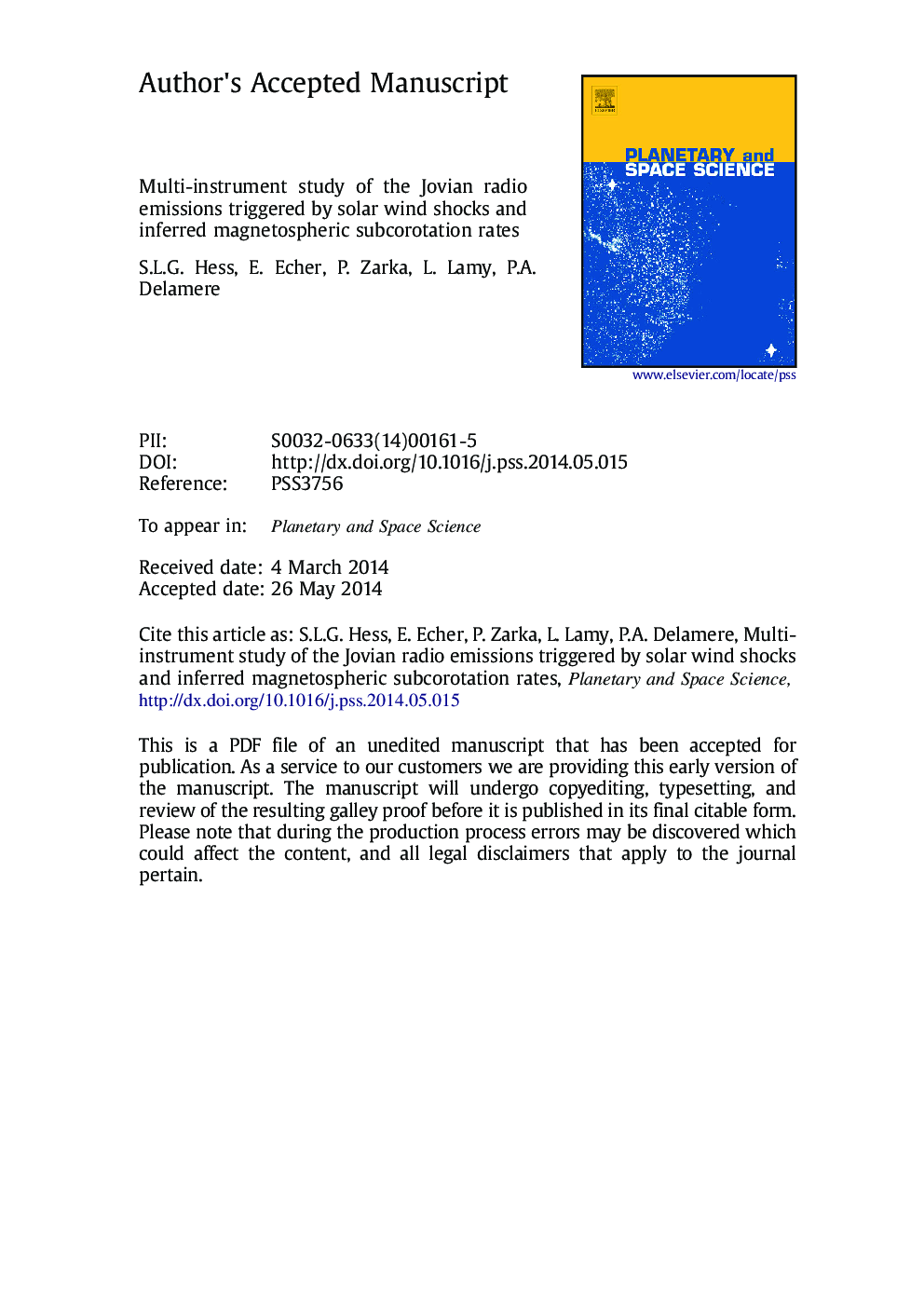| Article ID | Journal | Published Year | Pages | File Type |
|---|---|---|---|---|
| 8143712 | Planetary and Space Science | 2014 | 42 Pages |
Abstract
We also used simultaneous radio observations from the ground-based Nançay decameter array and from the Galileo radio instrument (PWS). From the comparison of these measurements with Cassini׳s, we deduce the regions where the radio storms occur, as well as the radio source subcorotation rates. We show that FFS-triggered emissions onset happens in a sector of local time centered around 15:00 LT, and that all the shock-triggered radio sources sub-corotate with a subcorotation rate of ~50% when the IMF is below 2 nT and of ~80% when it is above 2 nT. These rates could correspond to the extended and compressed states of the Jovian magnetosphere.
Related Topics
Physical Sciences and Engineering
Earth and Planetary Sciences
Geophysics
Authors
S.L.G. Hess, E. Echer, P. Zarka, L. Lamy, P.A. Delamere,
